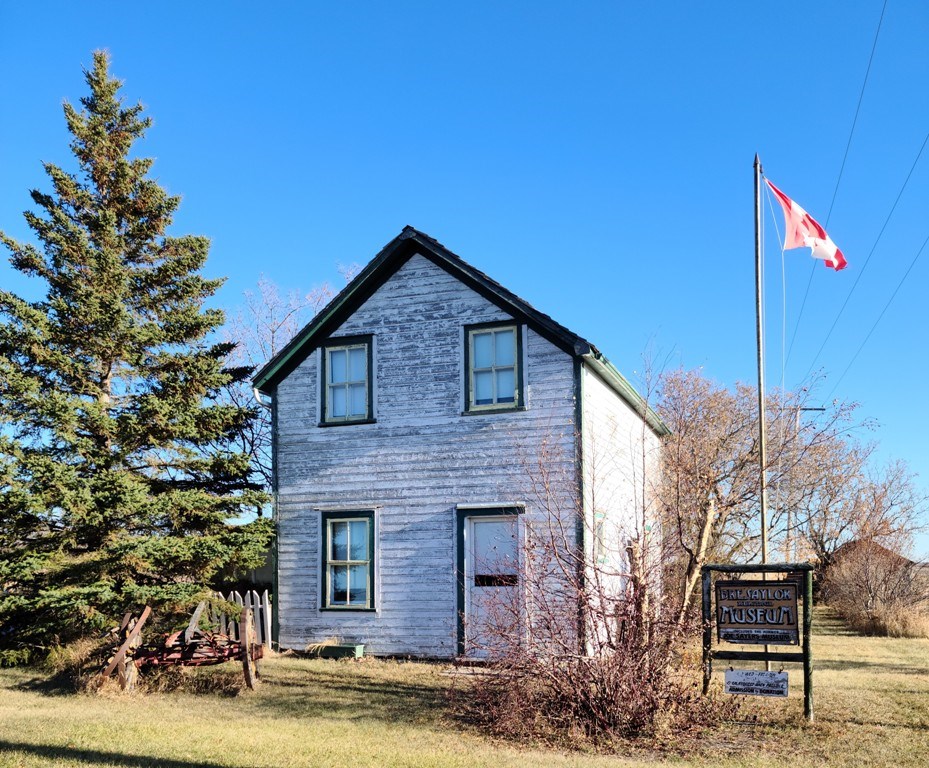Early life in the Bresyalor area reflected that of homesteaders over the years. Eggs were collected once a day. The milk cow wore a bell and had to be found morning and evening and brought home for milking. The pigs and chickens needed feeding regularly. Cattle had free range and the grain fields were fenced. Each family usually had two fields, one for selling and one for their own use.
In the spring, the fields were seeded and gardens planted. In summer, hay was put up for the winter and wild berries were picked and canned. The grain and garden produce were harvested in the fall. The grain needed to be ground into flour and in late fall or early winter each family would load up a wagon or cart with grain and take it to the closest mill, which was in Prince Albert, a week’s travel away. Upon arrival, they would have to wait another week to have it milled and then usually take another week to return home.
When Tom Taylor was 14 years old, he took a load of grain to Prince Albert. When he arrived, he found a gear had broken at the gristmill. It took two weeks to get the part and more time for the mill to be repaired. He then had to wait his turn with all the other farmers to have his wheat ground into flour. By the time the grain was ground, the weather had turned cold and it had snowed heavily. Before returning home, Tom had to change the wagon wheels over to a set of sleigh runners.
Early winter was butchering time for the winter meat supply. During the winter, trees were cut for logs and wood, and before spring, ice was cut and hauled from the river for the ice house so food could be kept cool in the summer. There were also the daily chores of feeding and watering the animals.
In the spring of 1883, a large party of Taylors, Bremners and Sayers returned to Winnipeg for more supplies and equipment. They brought back a 10-horse-power threshing machine, a self-tie binder and a quantity of other supplies and equipment.
The next two years for the settlers were years of building.
Charles Bremner had settled by the main travel route and built a store where he sold various items and bought or traded for furs. Chief Poundmaker was a regular visitor and became a good friend to many of the Bresaylor settlers.
In winter, logs were cut upstream along the North Saskatchewan River and floated downstream to Bresaylor in the summer. Houses, barns and ice houses were built.
In those years, a Catholic church was built and ministered to by Father Cochin, who at the time lived in Bresaylor. In later years he ran a mission near the present-day village of Cochin, which is named after him.
A school was also built. It was used as a school by day and often used for dances and other socials in the evenings. Dances would usually last until daybreak the next morning, so the people could return home in the daylight. By Sept. 1, 1884, a post office was built.
By the winter of 1884-85, Louis Riel had returned to Batoche. John Jobin, the school teacher in Bresaylor at the time, always seemed to know what Riel was doing and relayed information to Bresaylor and the reserves. He seemed convinced everyone should join Riel’s cause. Most of the Bresaylor people tried to ignore the unrest around them and just wanted to be left alone to farm and live their lives. They had also tried to leave behind the unhappy events of the first Riel Rebellion some 10 years earlier.
Check out the Bresaylor Heritage Museum Facebook page for more information. The museum is open by appointment only from June 9 to Aug. 31. Please phone 306-895-4813.




